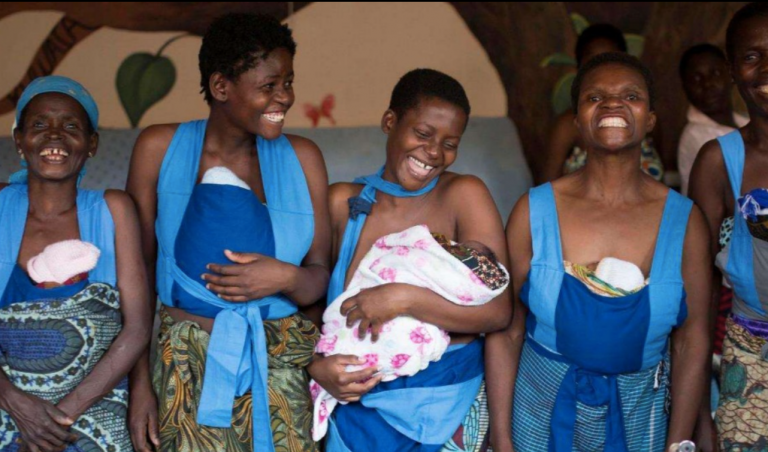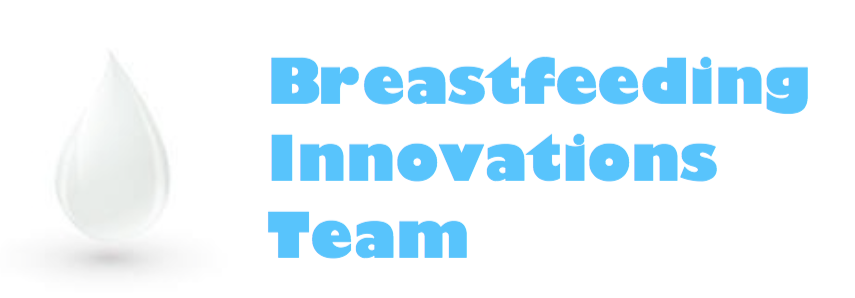They are tech- and social media-savvy risk-takers, determined to find new solutions to a very modern problem: how to make breastfeeding compatible with the lives of busy working mothers in a world that assumes they have no care responsibilities.
These innovators eschew the old fault lines – infant formula vs breast is best – and are just as likely to lead startups as nonprofits and to speak from a TED stage as a picket line. Many are first-time moms and dads experiencing just how difficult it is to fulfill the official recommendation to breastfeed exclusively for six months and then continually for two years.
They are science-based and data-driven to the point of obsession, continuously testing and retesting their solutions in search of a breakthrough. Above all, they rarely go it alone and understand the value of partnerships, often with very unusual suspects.
Meet the new wave of breastfeeding innovators who are taking on some of the biggest barriers to breastfeeding in new ways. They are setting ambitious goals – from 100% human milk NICUs and 24/7 access to lactation support via your phone, to “smart” breast pumps and private pods for public breastfeeding – all in pursuit of the singular mission of making breastfeeding compatible with modern life.
- The entrepreneurs
Imagine a corporate boardroom with Katherine Ryder of Maven, Naomi Kelman of Willow, Janica Alvarez of Naya Health, Osnat Emanuel of MomSense, Sascha Mayer of Mamava, Kate Torgersen of Milk Stork, Eddie Park and Bryan Nowroozi of Mimeo Labs, Shana Lawlor of Momseze, Ben Lundin of Pacify and Anna Sadovnikova of Liquid Gold Concept seated around the table. They are all entrepreneurs who started their own companies to take down a barrier to breastfeeding. Whether it’s transforming the breast pump experience (Willow, Naya Health, MimeoLabs, MomSense, Milk Stork), revolutionizing access to lactation support (Maven, Pacify, Momseze, Liquid Gold Concept), or removing the fear factor from breastfeeding in public (Mamava), these CEOs and their startups are a powerful new force for change.
- The milk bank director
Not all mothers can breastfeed, and some babies will struggle even when their mothers are willing and able. This is where donor human milk banks can be a lifeline, especially for sick and vulnerable newborns. Julie Bouchet-Horwitz is one of a growing group of leaders who are getting very creative to ensure that every baby who needs donor milk can get it. With crowdrise campaigns, change.org petitions, and a partnership with the Sirens Women’s Motorcycle Club to zip around the city delivering donor human milk to hospitals, the New York Milk Bank is setting a new standard for milk banks everywhere.
- The scientist
With academic papers titled “Human milk oligosaccharides: every baby needs a sugar mama” and research projects named “Milk Moonshot,” Lars Bode is charting new territory in the exploration of the special properties of human milk. With support from the Family Larsson-Rosenquist Foundation, Lars and his team at the University of San Diego are discovering exactly how breastmilk functions as “specialized medicine for newborns.”
- The activist
With one of the lowest rates of exclusive breastfeeding on the planet (17%) and the highest burdens of child death, Nigeria is the number-one priority for breastfeeding support, says Hauwa Abbas. Hauwa and her committed team at Silver Lining for the Needy routinely educate mothers about the benefits of breastfeeding, traveling to primary health centers and food markets across the country, especially during World Breastfeeding Week.
- The investors
Unheard of a just a few years ago, venture capitalists are starting to pay attention to breastfeeding. Investments in Maven by Anu Duggal of Female Founders Fund and Tracy Warren at Astarte Ventures, in Naya Health by Catherine Muther of Astia Angels, in Willow by Eylul Kayin of New Enterprise Associates, and in Mamava by Cairn Cross at Fresh Tracks Capital are leading the way, but much, much more is needed.
- The politician
Senator Larissa Waters made headlines all over the world when she breastfed her 14-week-old girl in the Australian Senate Chamber, tweeting how proud she was to widespread support. Larissa joins a growing number of members of parliament who are breastfeeding their babies at work, sparking social media campaigns like #ThisisWhataPoliticianLooksLike and calls for an annual “Breastfeed your Baby in Parliament Day.” Their actions are changing our assumptions about leadership and taking the message to the place where policies are made.
- The academic
When she told her live audience at TEDWomen 2016 that the 130 million women who deliver babies every year deserve “our best science,” Katie Hinde struck a chord. One year later that talk, “What we don’t know about mother’s milk,” has been viewed a million times. Katie leads the Comparative Lactation Lab at Arizona State University and presides over an online lactation information empire. Her Mammals Suck…Milk! blog is a shrine to modern motherhood and feminism. She is one of the new wave of breastfeeding advocates who never say that breastfeeding is “free” or tell a woman what she “should do” with her body.
- The designer
When Cansu Akarsu wanted to design better tools to help mothers in Africa breastfeed their sick and vulnerable babies, she joined forces with Laerdal Global Health to develop a suite of new products including the CarePlus sling, the Neonatal Intuitive Feeding TechnologY (NIFTY™) cup, and the MamaBreast feeding simulator. Cansu practices “deep immersion” in the communities she designs for and says that “innovation is all about impact,” which in her world means helping babies survive and grow.
- The nurse
Disturbed by the lack of breastmilk feeding in NICUs, Diane Spatz penned her own Ten Steps for Promoting and Protecting Breastfeeding for Vulnerable Infants in 2004. In the decade following, she has built a world-class lactation program and Mothers’ Milk Bank at the Children’s Hospital of Philadelphia and travelled the world helping other hospitals lift their game. On a recent visit to several hospitals in India she found very little breastfeeding support for mothers with NICU babies and, undaunted, informed government leaders of what needed to be done in no uncertain terms.
- The hacker
Appalled by the breast pumping experience, Catherine d’Ignazio persuaded MIT Media Lab to host a “hackathon” in 2014 called, “Make the Breast Pump NOT Suck.” There has been a spate of new breast pumps popping up ever since, including hands-free, smartphone- and even sensor-enabled models. Catherine is obsessed with how technology can be applied to improve the experience of motherhood. Her team will be back with an even more ambitious hackathon in 2018.
This is just a sample of how innovators are exploring new ways to support breastfeeding. What they share is an understanding that innovation thrives in environments where there is a diversity of perspectives and where new ideas are generated in a climate of honest discourse and rigorous and respectful debate.
You can find more of their stories on Twitter where you can also share your own stories of breastfeeding innovators using the hashtag #BreastfeedingInnovators.

 The Breastfeeding Innovations Team is an alliance of more than 200 organizations and individuals committed to accelerating the development and adoption of the innovations with the greatest potential to increase access to breastmilk for babies, especially the most vulnerable. The Team works in support of the UN Secretary-General’s
The Breastfeeding Innovations Team is an alliance of more than 200 organizations and individuals committed to accelerating the development and adoption of the innovations with the greatest potential to increase access to breastmilk for babies, especially the most vulnerable. The Team works in support of the UN Secretary-General’s